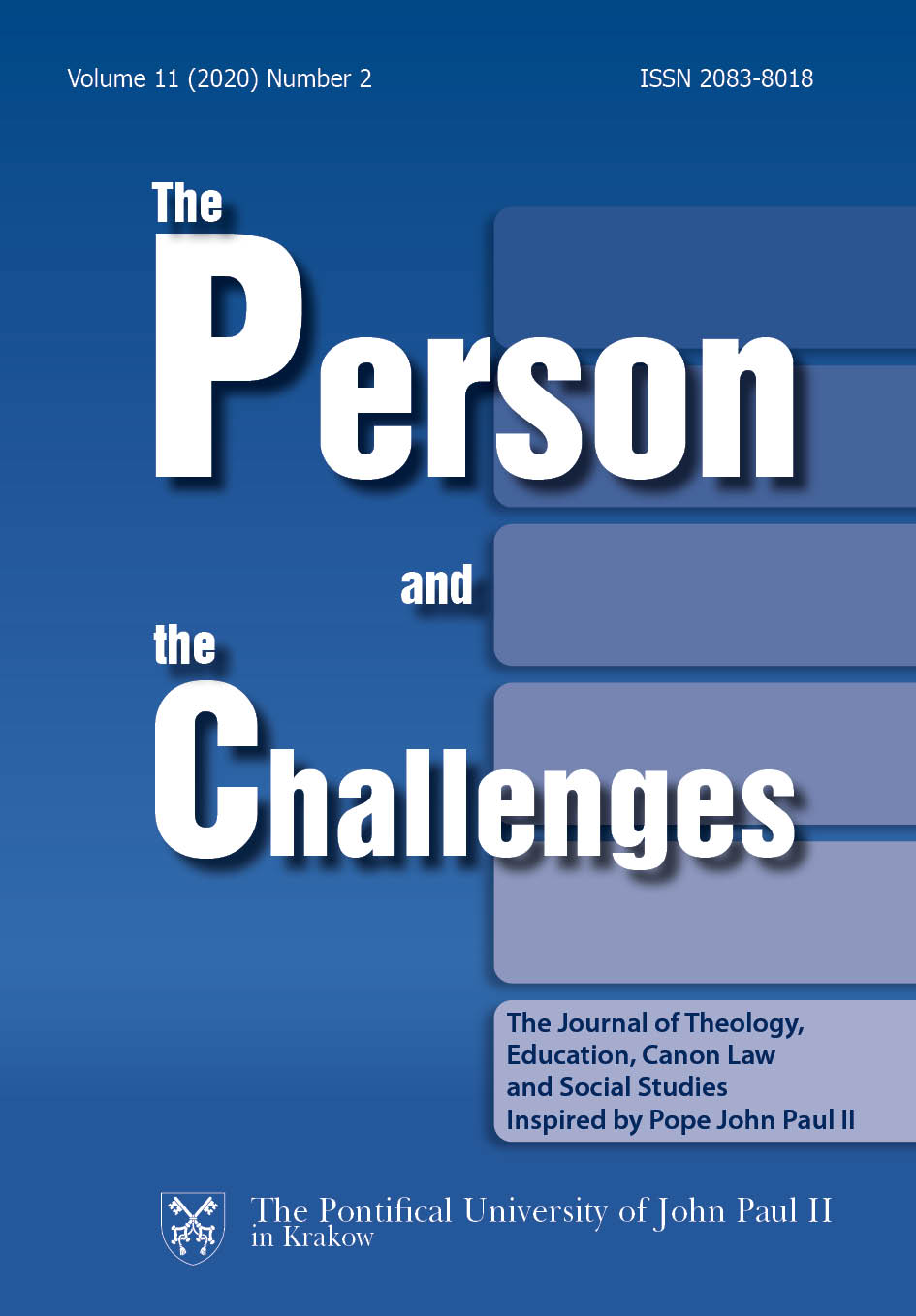Repetition and not Parallelism as the Determinant of Poetry in the Hebrew Bible. A Case Study of Biblical Story of Creation (Gen 1)
DOI:
https://doi.org/10.15633/pch.3758Keywords:
Poetry, poetry in the Bible, parallelism, repetition, rhythm, biblical story of creationAbstract
The article points to new research on the subject of poetics in the Bible and argues against the thesis that the basic indicator of poetry and poetic texts in the Bible is parallelism.According to the author, repetition is such an indicator. An analysis of the biblical story of creation of the world was used as the case study (Gen 1).
References
Alter R., The Glory of Creation in Psalm 104, in: Elaine T. James, J. Blake Couey (eds.), Biblical Poetry and the Art of Close Reading, Cambridge: Cambridge University Press 2018, pp. 49–60.
Alter R., The Art of Biblical Poetry, New York: Basic Books 2011.
Alter R., The Art of Biblical Translation, Princeton: Princeton University Press 2019.
Berlin A., The Dynamics of Biblical Parallelism, Grand Rapids: Eerdmans 2008.
Brzegowy T., Psałterz i Księga Lamentacji, Tarnów: Biblos 2007.
Dobbs-Allsopp F.W., On Biblical Poetry, Oxford: University Press 2015.
Frog M., Tarkka L. (eds.), Parallelism in Verbal Art and Performance, Columbia: University of Missouri 2017.
Gaines J., The Poetic Priestly Source, Minneapolis: Fortress Press 2015.
Geller S.A., Parallelism in Early Biblical Poetry (HSM 20), Missoula: Scholars Press 1979.
Geller S.A., The Dynamics in Parallel Verse. A Poetic Analysis of Deut 32:6–12, “Harvard Theological Review” 75 (1982), pp. 35–56.
Gunkel H., Genesis. Translated and Interpreted, trans. M.E. Biddle, Macon: Mercer University Press 1997.
Hrushovski B., Prosody, Hebrew, in: Encyclopedia Judaica, Michael Berenbaum, Fred Skolnik (eds.), Detroit: Macmillan Reference 2007, vol. 16, col. 595–623.
James E.T., J.B. Couey (eds.), Biblical Poetry and the Art of Close Reading, Cambridge: Cambridge University Press 2018.
Kosmala H., Form and Structure in Ancient Hebrew Poetry. A New Approach, “Vetus Testamentum” 14 (1964), pp. 423–445.
Kugel J.L., The Idea of Biblical Poetry. Parallelism and Its History, New Haven: Yale University Press 1981.
Kugel J.L., The Great Poems of the Bible, New York: Free Press 1999.
Linafelt T., Narrative and Poetic Art in the Book of Ruth, “Interpretation: A Journal of Bible and Theology” 64 (2010), pp. 117–129.
Linafelt T., Poetry and Biblical Narrative, in: The Oxford Handbook of Biblical Narrative, Danna Nolan Fewell (ed.), Oxford: University Press 2016, pp. 84–92.
Lowth R., De Sacra Poesi Hebraeorum, Oxford 1753. Translated byG. Gregory, Lectures on the Sacred Poetry of the Hebrews, London: Tegg& Son 1835, https://openlibrary.org/works/OL3209476W/De_sacra_poesi_Hebraeorum.
Lunn N.P., Word-Order Variation in Biblical Hebrew Poetry. Differentiating Pragmatics and Poetics, Milton Keynes: Paternoster 2006.
Majewski M., Jak przekłady zmieniają Biblię. O przekładach i przekładaniu Pisma Świętego raz jeszcze, Kraków 2019.
PardeeD., Ugaritic and Hebrew Poetic Parallelism. A Trial Cut (VTSup 39), Leiden: Brill 1988.
Polak F.H., Poetic Style and Parallelism in the Creation Account (Genesis 1.1–2.3), in: Creation in Jewish and Christian Tradition, H. Reventlow, Y. Hoffman (eds.), London: Sheffield Academic Press 2002, pp. 2–31.
Rad G. von, Genesis. A Commentary (OTL), trans. W.L. Jenkins, Philadelphia: Westminster Press 1972.
Rybak M., Wielogłos: Czym jest poezja i kto jest poetą?, „Wyspa. Kwartalnik literacki” 9 (2009), http://kwartalnikwyspa.pl/wieloglos-czym-jestpoezja-i-kto-jest-poeta/ (11.05.2020).
Tsumura D.T., Vertical Grammar of Parallelism in Hebrew Poetry, “Journal of Biblical Studies” 128 (2009), pp. 167–181.
Wagner A., Der Parallelismus membrorum zwischen poetischer Form und Denkfigur, in: A. Wagner (ed.), Parallelismus membrorum, Fribourg: Academic Press 2007, pp. 1–26.
Weber B., Toward a Theory of the Poetry of the Hebrew Bible. The Poetry of the Psalms as a Test Case, “Bulletin for Biblical Research” 22 (2012), pp. 157–188.
Wenham G. J., Genesis 1–15, Dallas: Word 1987.
Downloads
Published
Issue
Section
License
Authors who publish with this journal agree to the following terms:
- Authors retain the copyright and full publishing rights without restrictions, and grant the journal right of first publication with the work simultaneously licensed under a Creative Commons Attribution 4.0 International License that allows others to share the work with an acknowledgement of the work's authorship and initial publication in this journal.
- Authors are able to enter into separate, additional contractual arrangements for the non-exclusive distribution of the journal's published version of the work (e.g., post it to an institutional repository or publish it in a book), with an acknowledgement of its initial publication in this journal.
- Authors are permitted and encouraged to post their work online (e.g., in institutional repositories or on their website) prior to and during the submission process, as it can lead to productive exchanges, as well as earlier and greater citation of published work (See The Effect of Open Access).

